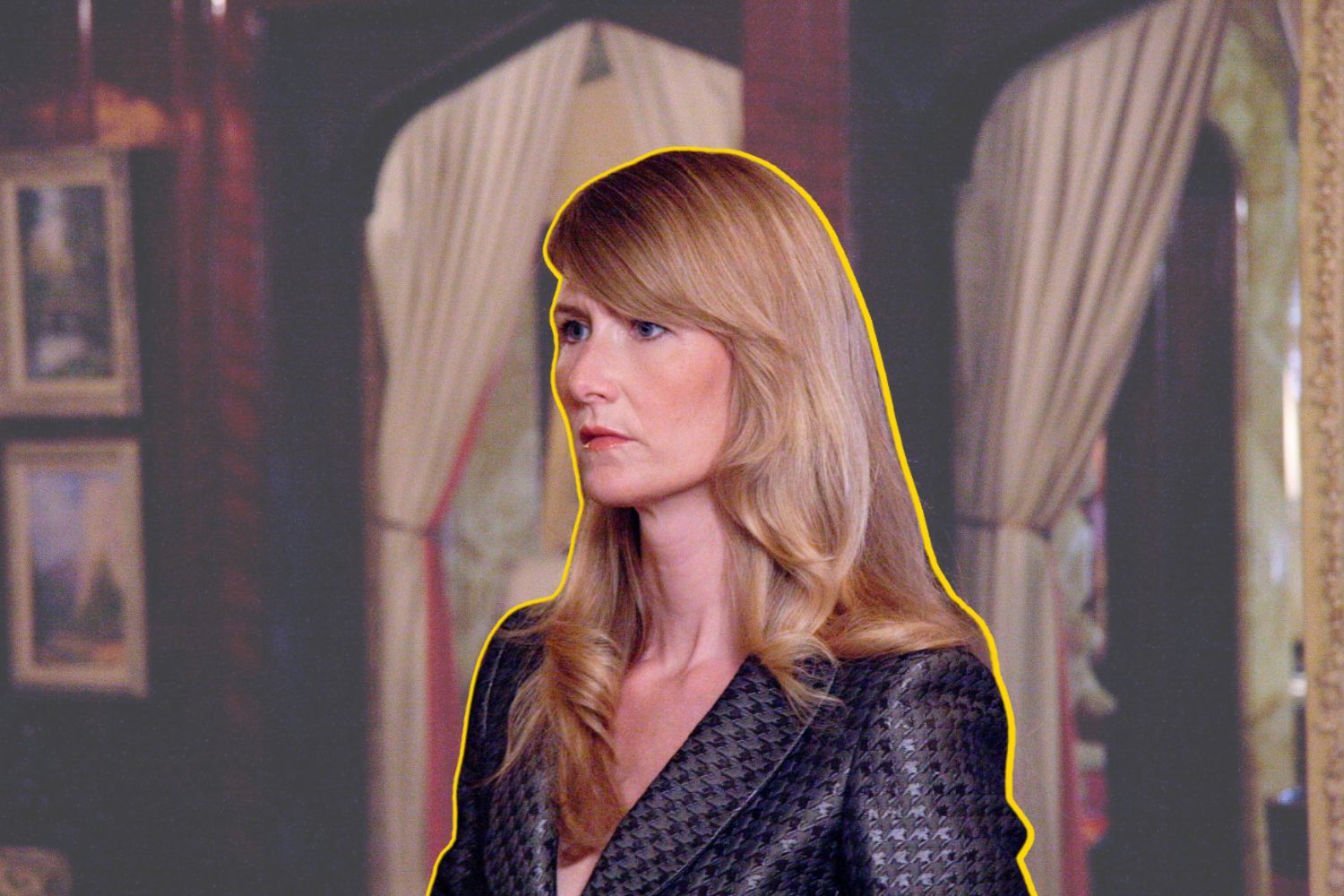Editorials
‘Inland Empire’ Is David Lynch’s Worst Nightmare
April 19th, 2023 | By Guillermo De Querol

Great horror movies instill fear and dread as they unfold. They also implant themselves in the mind of the observer, taking real estate there and spreading like a virus long after the credits roll. But even then, rarely do they occupy this liminal space indefinitely. David Lynch’s Inland Empire—a deluge of nightmares from the murkiest depths of the subconscious stacked one inside another like a cursed Russian nesting doll—does precisely that.
Lynch’s 2006 film has only risen in estimation since being dismissed upon release. Over the last decade, it has furiously dug its way back into our cultural discourse to assume a preeminent place in the cinematic canon—not purely as a watershed in digital filmmaking but as one last, glorious swing for the fences from one of the boldest masters of our time.
Even by his usual standards, Inland Empire is the Lynch puzzle-box mystery that drives the biggest stake through the heart of conventional storytelling. It is a disjointed, free-falling tumble into the abyss that lingers long like a drug-addled fever dream. It is also a ghost story for the Myspace era that invites as many readings as a Rorschach Test. An argument could be made that Inland Empire works so well precisely because it is entirely instinctual and unfettered by logic. In fact, trying to devise a baseline description of the events that unfurl over its three-hour runtime feels somehow counterproductive.
I could tell you that Laura Dern plays Nikki Grace, a blonde actress who takes on a role in a Hollywood remake of an uncompleted (and ostensibly cursed) Polish production. I could also tell you that Nikki’s sense of identity begins to unravel once she assumes her on-screen persona, falls for her co-star (Justin Theroux), and realizes her life uncannily mirrors the pulpy romantic melodrama they’re shooting. Or that, as it turns out, the surface narrative exists solely at the juncture of dream and make-believe fantasy, spun by a combination of submerged guilt, trauma, and grief of a battered Polish prostitute (Karolina Gruszka), with recurrent people and situations drawn from her troubled past.
But that doesn’t really begin to cover it.
Though decidedly more than just a puzzle to be solved, Inland Empire has experienced an extended life as the subject of in-depth obsession and rigorous psychoanalytic readings. Educated scholars and enthusiast film buffs alike seem to have taken a masochistic delight in cracking the case open and mapping out a clear consensus on its interpretation. As Sisyphean and misguided as though these endeavors may be, the irresistible challenge of following the trail of clues and symbols and deciphering the inexhaustible meanings hidden in plain sight has nevertheless played a key role in the film’s critical reappraisal and burgeoning cult status.
At its core, Lynch’s work is inextricably tied by its binary oppositions. Good and evil; innocence and corruption; the mundane and the bizarre; the blinkered optimism of midcentury Americana fused with turn-of-the-millennium panic. Eraserhead mined Lynch’s personal hardships living in Philadelphia to provide a bruising view of urban alienation and parental anxiety. Blue Velvet and Twin Peaks’ cracked-mirror vision of small-town life eschewed Reaganite romanticism to expose the sinister underbelly festering beneath its veneer of idyllic normalcy.
The wormhole of shifting identities, doppelgängers, narrative high jinks, and noir trappings masterfully deployed in Lost Highway and Mulholland Drive marked the latest paradigm shift in Lynch’s career. In journeying into the crumbling psyche of doomed ingénues—both of whom are driven to murder by romantic jealousy—these two murky neo-noirs (along with Inland Empire) represent a formidable intersection of Tinseltown fables grounded in reality yet reflected off the characters’ splintering mindscape. The non-linear Möbius strip structure allowed the Montana filmmaker to dive head-first into the dark recesses of the human subconscious and distill it straight into celluloid.
Lynch’s stories are often billed as self-reflexive reimaginings of 20th-century pop-culture signifiers, with The Wizard of Oz, Sunset Boulevard, and Vertigo forming something of a connective tissue. However, that surface-level description is misleading. Rather than embracing any kind of deflating irony à la Quentin Tarantino, Lynch conjures up the phantoms of Old Hollywood as a Trojan horse to provide piercing smackdowns on the poisonous ecosystem that is showbiz and the buried sins that keeps its dream factory up and running. The concrete netherworld known as Los Angeles—a mythical paradise built on skewered illusions and spoiled dreams—served as the shadowy backdrop for three of Lynch’s last four movies.
It was in the early aughts, off the heels of a generational critical heavyweight and propelled by the digital revolution that at the time seemed to augur a fully-democratized film industry, that the fascinating oddity that is Inland Empire was conceived.
No less formally audacious than its predecessor, Lynch’s three-hour fever dream is not just a minor addendum to 2001’s Mulholland Drive (or its evil twin, as suggested by the New York Times’s Manohla Dargis), but a rabid offspring that deepened the implications of said formula. The film-within-a-film motif places it in direct conversation with Fellini, Kaufman, Truffaut, and the Coen Brothers. It also lays the groundwork for a meditation on the deceptive artificiality of the medium it inhabits—the symbiotic, often all-consuming, relationship between artist and art and the voyeuristic interest we project as idle spectators.
Mulholland’s waking-dream dichotomy, in which the professional and romantic disillusionment of a struggling wannabe starlet assumes the form of a self-rewarding façade, is conspicuously bifurcated. On the flip side, the viewer is largely left to their own devices to realize when these two converge in Empire, which, almost defiantly, muddles and folds every state of consciousness in on itself.
Uncoiling like a bottomless bad acid trip, Empire offers less of a unified narrative than a stream of rabbit holes all violently bleeding into each other, kept forever out of reach behind a thick, unnavigable fog. For all its obtuse abstractions, Lynch’s visceral disdain for Hollywood comes through loud and clear. Scenes like Nikki leaving a gory trail on Hollywood Boulevard after being brutally stabbed with a screwdriver can only be read as an evocative reminder of the way the film industry chews vulnerable young women only to spit them out indiscriminately.
Inland Empire was shot entirely in low resolution with a handheld Sony digital camcorder. This instills it with a gritty, grainy aesthetic that, oddly enough, adds to the film’s overwhelming sense of claustrophobia and onrushing chaos. All of Lynch’s signature hallmarks are on proud display here, though one could argue that this behemoth would go on to redefine the very concept of “Lynchian” altogether. If nothing else, the director’s first brush with digital filmmaking further cemented his legend as the renaissance man of American cinema into the new millennium while tying an elegant knot at the end of his film career.
For all the spectral boogiemen, humanoid rabbits, and gypsy folk tales occupying Empire’s chamber of horrors, it’s the extreme close-ups of a disoriented Laura Dern battling her inner demons and barreling deeper into the void that I have the hardest time shaking off. By dredging up all the primal fears and innermost desires we keep conveniently tucked away in our subconscious, Lynch arrived at something at once jarringly uncanny and universally recognizable.
Though it never had a chance of reaching a mass audience on release and hardly plays by the genre’s playbook, Inland Empire stakes its claim at the top of horror hill by giving cinematic flesh to monsters all too similar to the ones we avoid confronting in our head. This is a film that dares you to stare right into the abyss long enough to find the abyss staring back at you.


